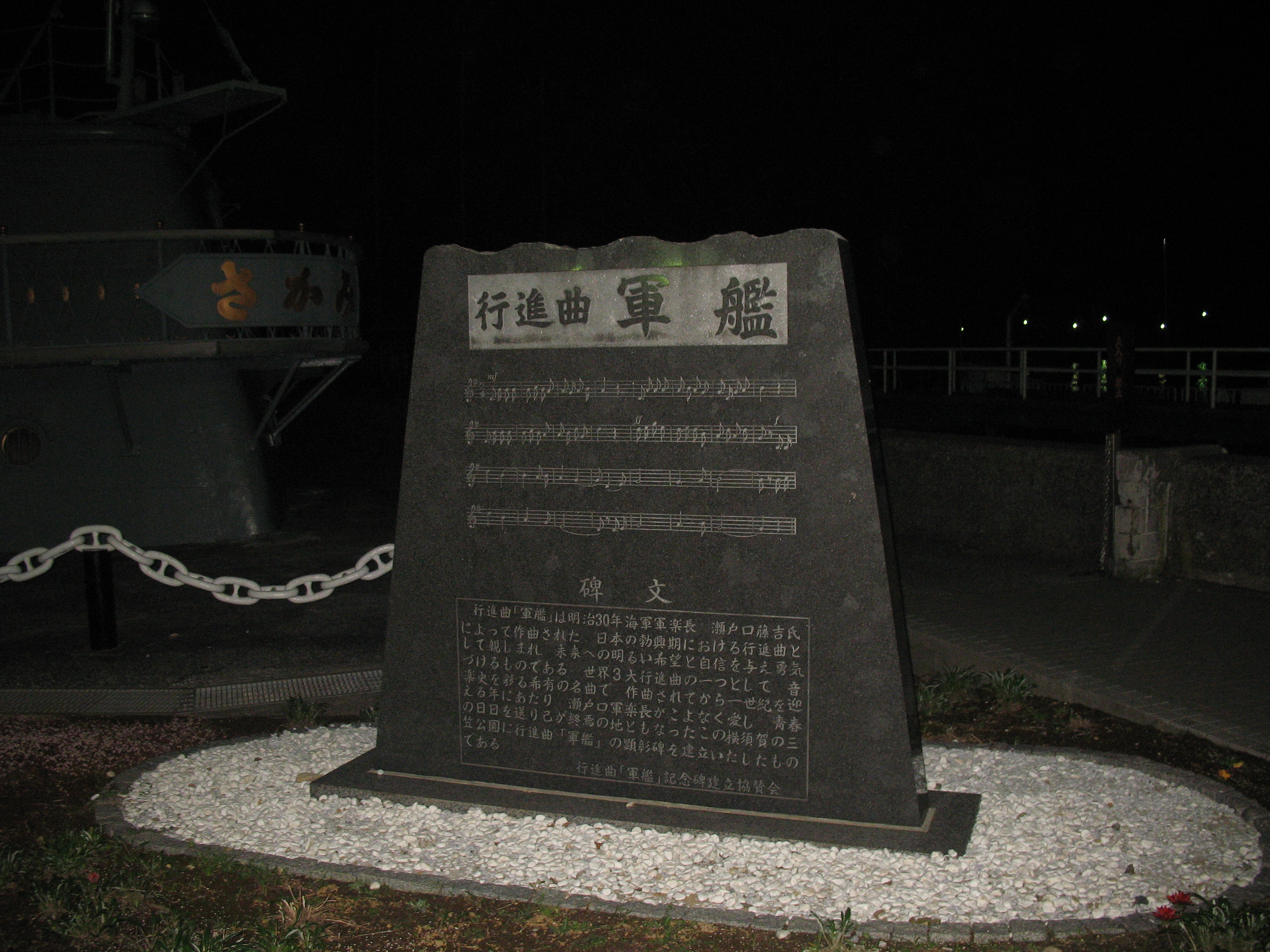Gunkan Kōshinkyoku on:
[Wikipedia]
[Google]
[Amazon]
The is a Japanese march composed in 1897 by Tōkichi Setoguchi. It was the official march of the
 The march, which sets to music lyrics by Hiraku Toriyama, was originally composed in B-flat major, but was transposed to F-major in the
The march, which sets to music lyrics by Hiraku Toriyama, was originally composed in B-flat major, but was transposed to F-major in the
Imperial Japanese Navy
The Imperial Japanese Navy (IJN; Kyūjitai: Shinjitai: ' 'Navy of the Greater Japanese Empire', or ''Nippon Kaigun'', 'Japanese Navy') was the navy of the Empire of Japan from 1868 to 1945, when it was dissolved following Japan's surrend ...
and is the official march of its successor, the Japan Maritime Self-Defense Force
, abbreviated , also simply known as the Japanese Navy, is the maritime warfare branch of the Japan Self-Defense Forces, tasked with the naval defense of Japan. The JMSDF was formed following the dissolution of the Imperial Japanese Navy (IJN) ...
(JMSDF). In Japan, the march is also commonly referred to as the .
History
Taishō era
The was a period in the history of Japan dating from 30 July 1912 to 25 December 1926, coinciding with the reign of Emperor Taishō. The new emperor was a sickly man, which prompted the shift in political power from the old oligarchic group of ...
in order to make it more manageable for men's voices. The third part of the song contains the lyrics of '' Umi Yukaba''.
Three years after its composition, Setoguchi made an instrumental arrangement of the song for the Imperial Japanese Navy Band where he served as its bandleader. The march was subsequently adopted as the Imperial Japanese Navy's official march. The Warship March was performed in Europe during the Imperial Japanese Navy Band's tour of Europe in 1907.
When under the Nipponophone label Japan produced its first gramophone records in 1910, the Warship March was among the first records issued.
After Japan's defeat in the Pacific War, the Warship March was outlawed by the U.S. occupation forces. However, after the Treaty of San Francisco
The , also called the , re-established peaceful relations between Japan and the Allied Powers on behalf of the United Nations by ending the legal state of war and providing for redress for hostile actions up to and including World War II. It w ...
was signed, the march was revived by the Imperial Japanese Navy's successor, the Japan Maritime Self-Defense Force. The march's fame has endured in post-war Japan, making numerous appearances for pachinko
is a mechanical game originating in Japan that is used as an arcade game, and much more frequently for gambling. Pachinko fills a niche in Japanese gambling comparable to that of the slot machine in the West as a form of low-stakes, low-st ...
parlors during that time.
In 1996, a monument commemorating the Warship March was erected at the Mikasa Park in Yokosuka, Kanagawa
is a city in Kanagawa Prefecture, Japan.
, the city has a population of 409,478, and a population density of . The total area is . Yokosuka is the 11th most populous city in the Greater Tokyo Area, and the 12th in the Kantō region.
The city ...
.
References
{{DEFAULTSORT:Gunkan koshinkyoku 1897 compositions Japanese-language songs Japanese military marches Japanese patriotic songs Japanese songs